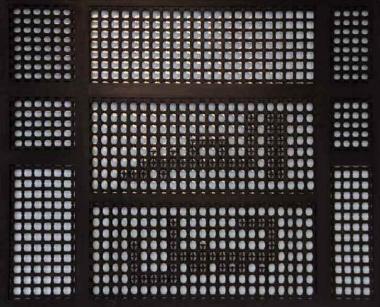Styles of calligraphy
Decorative writing – calligraphy – is one of the highest art forms of the Arab world. This is partly because strict Muslims disapprove of art which represents humans or living things.
A wealth of information about Arabic calligraphy can be found atislamicart.com, a website produced by the Islamic and Arabic Arts and Architecture Organisation. This includes a generaloverviewof calligraphy in an Islamic religious context and discusses the work offamous calligraphers.
It describes theinstrumentsused for calligraphy and how theproportionsof the letters are determined.
It explains thesix major scriptsused in traditional calligraphy, and the differences between them. There are also some examples of high-quality work in various styles.
AnotherSakkal Designis a website produced byMamoun Sakkal, a Syrian-born designer and teacher. The site provides ahistorical viewof the development of Arabic writing and calligraphy, from theearliest alphabetsto the evolution ofkuficandcursivestyles.
For those who want to try their hand, there are a couple oflessonsfor designing in the Kufic style.
Sakkal also offers a commercial service for renderingnamesand phrases into Arabic calligraphy as well as calligraphic versions ofcompany logos, and sells a range of Arabictype fonts.
Examplesof calligraphic art
Above: a video showing calligrapher Taha al Hiti at work.
Arabic Calligraphy
Examples of calligraphy from a variety of artists, showing the wide range of scripts and styles.
Islamic Calligraphy (I)
Examples in various styles - Kufi, Maghribi, etc.
Islamic Calligraphy II
Twelve images, though without description.
Calligraphic Collection
Examples from around the Islamic world, arranged by country
Hassan Massoudy
Iraqi-born Hassan Massoudy has been described as the greatest living calligrapher
Exhibition by Hassan Massoudy
October Gallery, London, 2006
Kalaam
Modern designs by Julien Breton, who does calligraphy using light.
Articles about calligraphy
Calligraphy in Islamic art
History, materials and techniques. Victoria and Albert Museum, London
History of Arabic calligraphy
Tools, techniques and paper, plus a look at some great Islamic calligraphers, by Mohamed Zakariya
Origins of Arabic Calligraphy
Turning the alphabet into art, plus:the reform of Arabic writing;early calligraphic development;later calligraphic development
An Islamic image (1):
Calligraphy as graphics – by Mamoun Sakkal
An Islamic image (2):
English in Arabic garb – by Mamoun Sakkal
Henna and tattoos
Decoration of the skin with henna, plus a note of caution on "Arabic" tattoos.
Lebanon's first Arabic printing press
“Al-Shamas Abdullah Zakher” established the first Arabic printing press in Lebanon in 1734.








